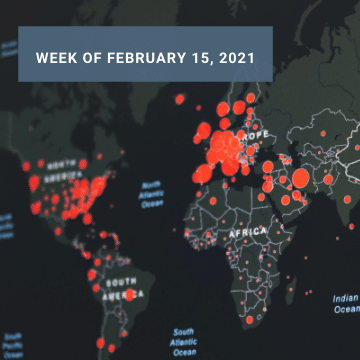Edna’s Garden: An 8-year-old girl with a passion for nature will turn the world upside down with her data experiments
Edna’s Garden, a story by Miquel Morales.
Jumping in just now? Check out all previous chapters.
Edna’s Garden – Chapter 2
The lift swooshed up the Manhattan building where Edna had been living for the eight years of her life. The elevator shaft looked much like a tree of glass growing along the exterior of the building, with a central vertical trunk and smaller shafts branching out to the sides connecting to each apartment. Almost all new elevators were built like this nowadays — historical architecture was one of the few last bastions against urban overdevelopment in a New York that simply had run out of place after the 2040s economic boom. Edna looked at the crowded city skyline with tired eyes. Delivery drones crossed the space in between buildings, avoiding each other by just a few millimetres. This place definitely needs more green.
“Let’s hope we can sneak you through the service door and get you cleaned up without your parents seeing us, young lady,” said Peter with a long sigh.
“My father, Peter. She is not my mom. Plus, I don’t care what happens with her stupid dinner.” Her stepmother was throwing a party this evening to showcase her horrible paintings. She had convinced Dad to invite a renowned art critic he had once met at a corporate event. Classic Bianca, to use others’ influence for her petty little projects of self-aggrandising.
“You might not, but your father surely does. He’s got enough on his plate as it is with work to be mediating between the two of you. Plus, we are more than an hour late.”
The elevator door opened with a beep and Edna and Peter found themselves in the storage room behind the kitchen. Animated chatting and clinking glasses could be heard coming from the living room at the opposite side of the building floor the apartment fully occupied.
“Quick, let’s get you cleaned up and changed into more appropriate garments,” said Peter while pulling her towards one of the many bathrooms. A voice startled them right as he was opening the door for Edna to go in.
“Playing with dirt again, huh, Ed?” Her older sister was standing in the hallway with her arms crossed. Edna and her sister generally liked each other, but puberty was taking a toll on the way her sister treated her. They no longer shared the afternoons after school exploring alien worlds in virtual reality or fantasising about moving to a small village in the Canadian mountains where bird sounds replaced car horns. They still, however, agreed on the fact that Bianca Salazar had been a terrible addition to the family and that she had to go. At least on that, they stuck together.
“Peter, could you please help her with those shoes full of mud? I’ll go get her clean clothes.”
The party was, as per usual, a bit too much to say the least. Edna was trying to find a quiet corner of the living room in which she could remain unnoticed and wait for the whole thing to be over. Her sister would be of no help here – she was too busy with the friends she had invited over, one of whom, Edna thought, it was pretty obvious she liked. Edna could have invited Jahmil, her school buddy and a fellow admirer of the wonders of the natural world. But she had decided to spare him the pain.
One thing was to have him sit through one of her long-winded speeches in between classes, the other one was to have him join a party of NY socialites whose level of disregard for all things fun was only comparable to how easy it seemed for them to ignore the fact that they were surrounded by the grotesque paintings of an egomaniac they didn’t even like. Edna couldn’t wait for the whole thing to be over so that she could go back to her computer model of the pond and implement the updates she had come up with that day during business class.
At least the catering was good. Little pastries and cold canapés from Martinelli’s on 5th, her favourite café in town. Peter was busy carrying trays full of them up and down the room with his usual mix of warmth and sophistication. It almost pained her to think it had been Bianca who proposed getting the food for the showcasing from Martinelli’s. She had tried to sell it as a gesture to Edna and her sister, but Edna wasn’t buying it. Too nice of a gesture for Bianca Salazar.
“And you must be Edna,” a man’s voice said from behind. A bespectacled man wearing a flat cap and a shinny blazer was filling his plate with tiny savoury croissants and way too many olives. Definitely the art critic. A blue glow on the surface of his glasses informed Edna that he was looking something up in his augmented reality display – a kind of multitasking very popular in those days. “Your father has told me a lot about you, you know? Too bad he wasn’t able to make it today.” Unsurprisingly, her father had got caught up with one of his board meetings. Something about an activist investor. Probably nothing to do with the kind of activists that fight to save entire Amazonian ecosystems and that Edna admired so much. “So, what do you think of the paintings?” He pointed at the nearest one with a sausage-stuffed croissant.
Edna hesitated. “Eh, you know… the colour is kind of nice?”
“Relax,” he said with a chuckle. “I’m only here as a favour to your dad. Even he knows it’s painful to look at these things. But it’s important for Bianca. And so, it is to him. You know, your dad’s a good man. Nothing to do with the suits you tend to meet at these corporate things.
“Yeah, he’s cool,” she said quietly, wishing her father had as much time to spend with her as he apparently had to go around making friends with artistic types.
“Take that one, for example,” he said pointing at a big square painting across the room. It was an undecipherable pastiche of colours and shapes. “What do you think that actually is?”
Edna smiled. All things considered; she was starting to like the man.

“Hmmm. An eggplant fighting a chihuahua? No! Wait. Actually, I think it is a self-portrait of Bianca. See? You can recognise her silly hat and witch-like face. And that mouth that…”
Too late. Edna felt the presence of Bianca, who had approached the couple in the hopes of squeezing some feedback out of the art critic. Despite her apparently perfect smile, Edna could tell in her eyes that she had perfectly heard what she had just said. The rest, as they say, is history.
Back in her bedroom, Edna finished changing her clothes and sat at her desk. It was kind of comforting to be spared the rest of the evening. She wasn’t looking forward to the “honest chat” his dad would have with her when he got home later that day. Undoubtedly, Bianca would have told him how Edna had ruined her only chance at becoming a self-sufficient artist. As if she could have sold a single one of those paintings anyway. But at least she could go back to what mattered: the pond model.
She started by inputting the new data and variables she had collected at the park that day and then went on to fix the code with the new approach she had come up with. It took her a while to put it all together, but her face was glowing with excitement when she was done. She hit the compile button. A message appeared: insufficient power. Darn it. There was only one thing left to do. After some tweaking, she managed to connect her computing station to the apartments main power network. According to Tim345 on Reddit, it was not something a certified electrician would advise anyone to do. But what the heck. Not that anyone in that house put too much care on her anyway.
Edna pressed the compile button again.
The power went out with a low hum. In the absolute darkness of her room, Edna could hear Bianca’s howl piercing through the walls.
“Edna!!!”
To be continued…
Read the next chapter of Edna’s Garden: Edna’s Garden – Chapter 3
Need tips on how to find a job in IT? Check out our IT job hunting guide.















